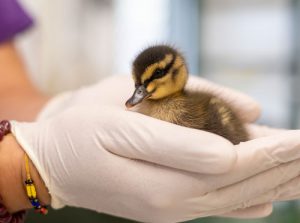- It is common for mallard hens to leave their ducklings to go feed (in peace 😊).
- These ‘brood-breaks’ can last for over 2 hours.
- It should not be assumed that ducklings encountered without a hen present have been abandoned.
- It is rare for a hen to abandon her ducklings unless under severe duress e.g. constant predator (includes humans) harassment.
- Unless you are certain a hen has been killed, i.e. have witnessed this occurring, please leave duckling where you found them.
- If you observe the ducklings at a distance for 3 hours and the hen has not returned to them, then it may be reasonable to assume they have been abandoned.
- Signs you need to get involved occur when there is a single duckling or a group in a highly agitated state, peeping loudly and unable to settle.
HELP PREVENT DUCKLING-NAPPINGS!
For more information you can also contact Fish and Game on 07 849 1666
